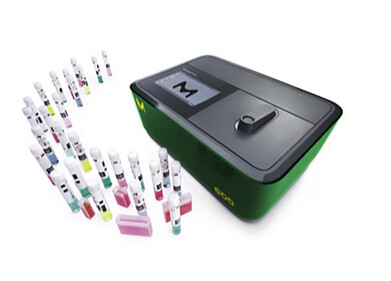Laboratory products
More Information Required on Toxic Methylmercury
Jan 09 2009
Whilst the toxicity of methylmercury is well known, a recent study at the Harvard School of Public Health (Boston, MA, USA) has suggested that the risk of brain damage associated with exposure to this compound has been underestimated by the medical world.[1] Exposure to levels of methylmercury previously considered safe could cause harm, particularly to the unborn developing foetus. The study showed that such neurotoxins damage the developing brain to a far greater extent than the adult brain, resulting in irreversible brain damage. The authors conclude that more information is required to link actual exposure with specific neurological problems. Neurodevelopmental disorders of possible environmental origin affect 5% to 10% of babies born worldwide; leading to dyslexia, mental retardation, attention deficit / hyperactivity disorder, cerebral palsy, and autism.[2]
Additionally studies carried out at the University of Liege (Belgium) have found exposure to methylmercury is damaging to white blood cells responsible for the body’s defence against disease and infection.[3] This may be of concern to people regularly consuming a high-level of fish in their diet.
In order to address this increased need for analysis there is a call for quicker and more widely available methods of mercury determination. One such technique is the direct analysis of solid and liquid samples by thermal decomposition, gold amalgamation and detection of total mercury content by atomic absorption spectrometry. The newest fully automated mercury analyser employing this innovative technology is the Hydra C from Teledyne Leeman Labs. Access to simple and quick trace-level mercury analysis is essential in gathering more information regarding the effects of mercury exposure. For further information, please contact Dr. Gareth Pearson at Quantitech Ltd on 01908 227722
or gp@quantitech.co.uk
Additional Information…
Human exposure to methylmercury is normally due to the consumption of fish and other aquatic species. The concentration of methylmercury in the top level aquatic predators can reach a level a million times higher than the level in the water due to bioaccumulation within these food chains. Ingested methylmercury is readily and completely absorbed and is transported freely throughout the body including
across the blood-brain barrier and across the placenta, where it is absorbed by the developing foetus. Methylmercury is not readily eliminated with a half-life in human blood of about 50 days.
References
[1] Philippe Grandjean, Marian Perez, Int. J. Environ. Health, 2/3-4 (2008) 417-428.
[2] EVISA News, www.speciation.net/Public/News/2008/10/30/3874
[3] Krishna Das, Ursula Siebert, et al., Environmental Health, 7 (2008) 52.
[4] Edie Newsrooom, www.edie.net/news/news_story.asp?id=15493
Digital Edition
Lab Asia 31.6 Dec 2024
December 2024
Chromatography Articles - Sustainable chromatography: Embracing software for greener methods Mass Spectrometry & Spectroscopy Articles - Solving industry challenges for phosphorus containi...
View all digital editions
Events
Jan 22 2025 Tokyo, Japan
Jan 22 2025 Birmingham, UK
Jan 25 2025 San Diego, CA, USA
Jan 27 2025 Dubai, UAE
Jan 29 2025 Tokyo, Japan



















